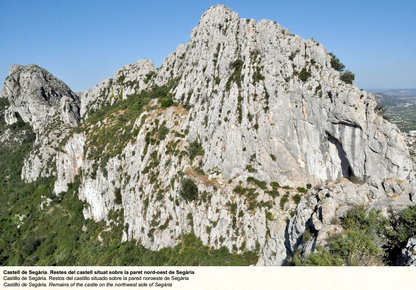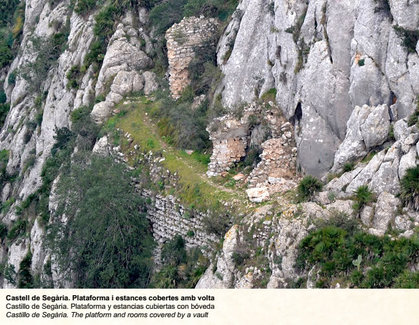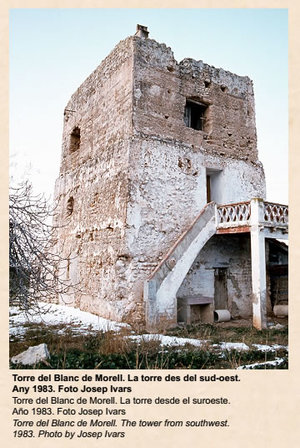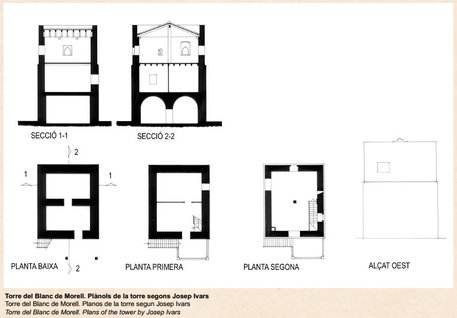|
Segària Castle is located at the western end of the Segària mountain range. The mountain ridge rises to 450m then descends abruptly to a col which is also a pass.
There is a small ledge or platform, bounded by a masonry wall on the northern, precipitous face of the mountain. Upon this ledge there are three parallel walls made of masonry and tapia, largely covered by bushes, which form part of the castle. A narrow path leads to the defensive structures from the col. Two of these walls support a vault of unknown use. A few metres further on, there is a rectangular water cistern on the almost vertical rock face. It is possible, with some difficulty, to climb up from these structures to the upper part of the ridge where one can find the remains of other walls and a cistern covered with rocks. The castle is on a pass between the plateau occupied by the Pego marsh and the Rectoria valley. The military building protected various farmsteads in the Girona valley on the southern side of the mountain, although this seems incompatible with its location, The chronology of the construction is unknown because the documentation that is available is from the Christian era and there have not been any archaeological studies. However, ceramics on the surface indicate occupation from the 12th century until the Christian conquest, when it was possibly abandoned and dismantled. |
|
The Blanc de Morrell tower stands on the plain sheltered by the eastern end of the Sierra Segaria next to the Cremadella road, a name by which the building is also known. This was the old road that ran from Oliva to Denia and the Garganta pass, skirting the mountains to avoid the marshy area.
At present, the tower can be seen from the new variant of the N-332 and from the AP-7 motorway. It is rectangular, 6.30m by 7.50m, with the longest side facing north/south, and is 10m high. It is divided into three floors and entirely made of tapia, the put-log holes and marks of the tapia boards still being visible. The ground floor has two rooms now covered by a solid brick vault, which originally would have been a water cistern with access from the first floor. Later, when it became a domestic dwelling they lost their original function and the current entrance opens to the south. The first floor appears to retain the original southerly entrance. On the second floor the walls lean a little inward with respect to the structure below and the tapia walls seem to have a different shape and dimensions. The four windows that open sideways break through the walls and would have been made in modern times. The current tile roof is gabled, but originally would have been flat, as indicated by the corbels preserved on the upper part of the walls. |
The tower guarded the Muslim population nearby and was possibly built in the first half of the 13th century since no documents even mention the farmstead which it would have protected. After the conquest it was occupied by Christians until the 14th century when it was abandoned.





